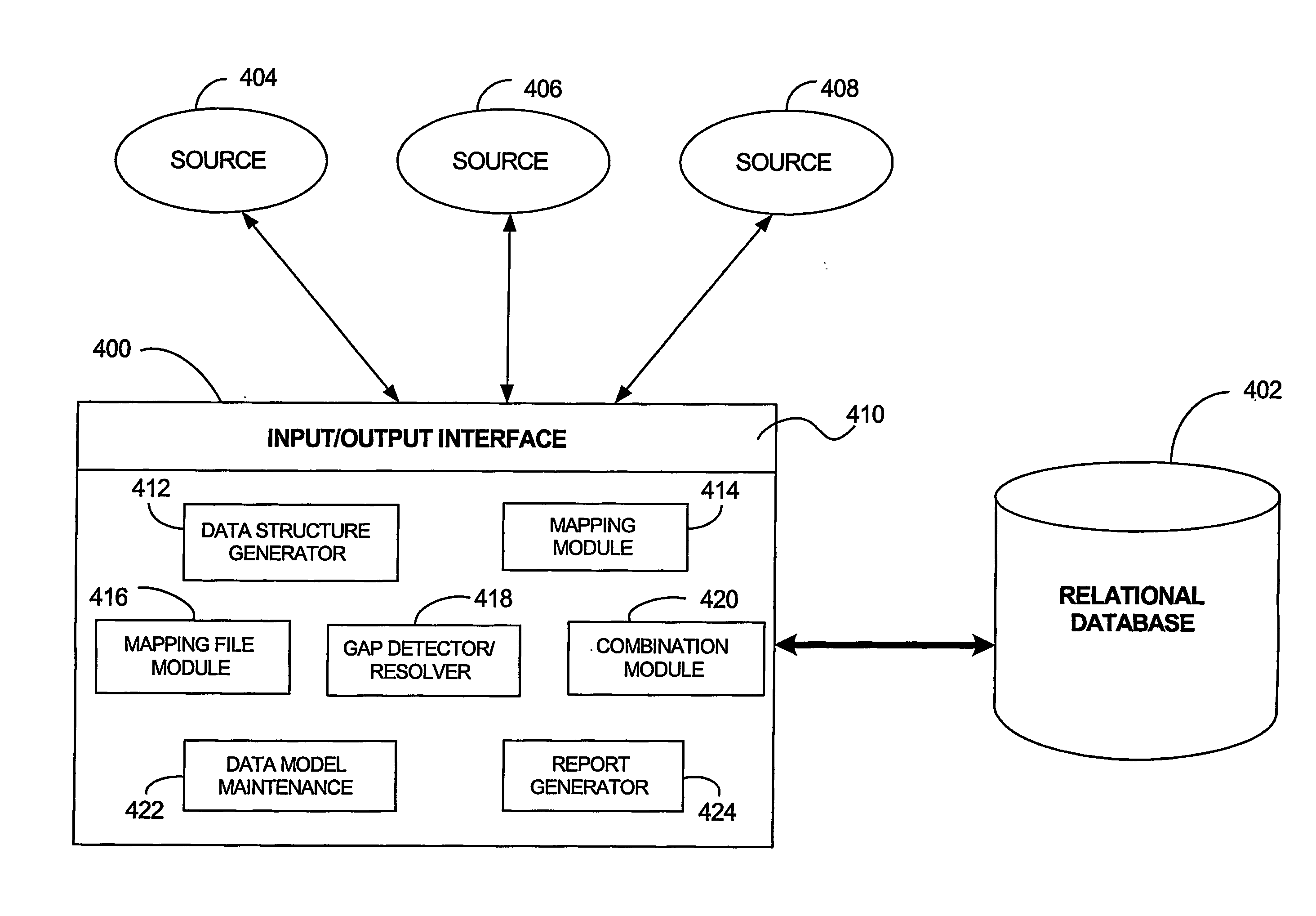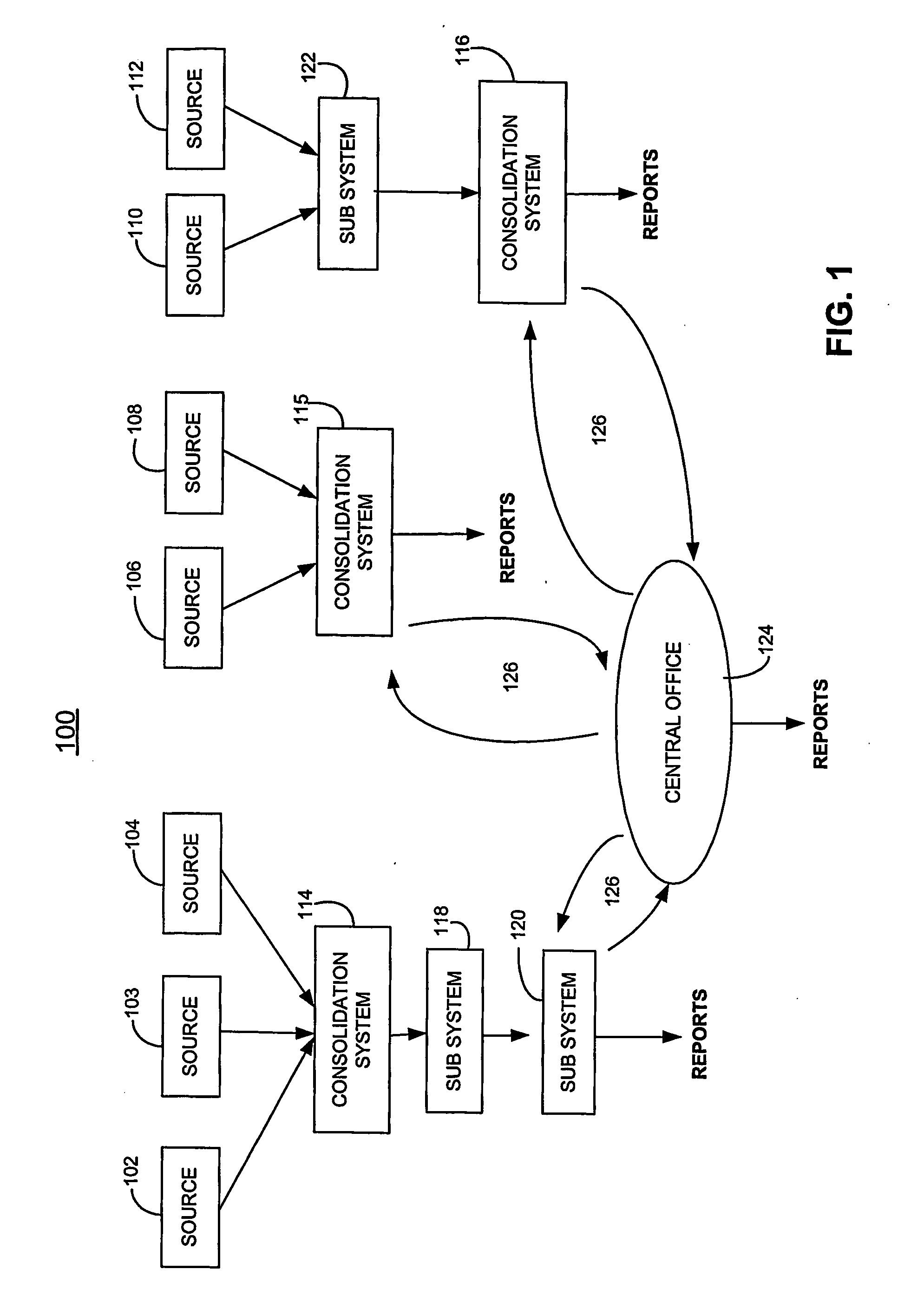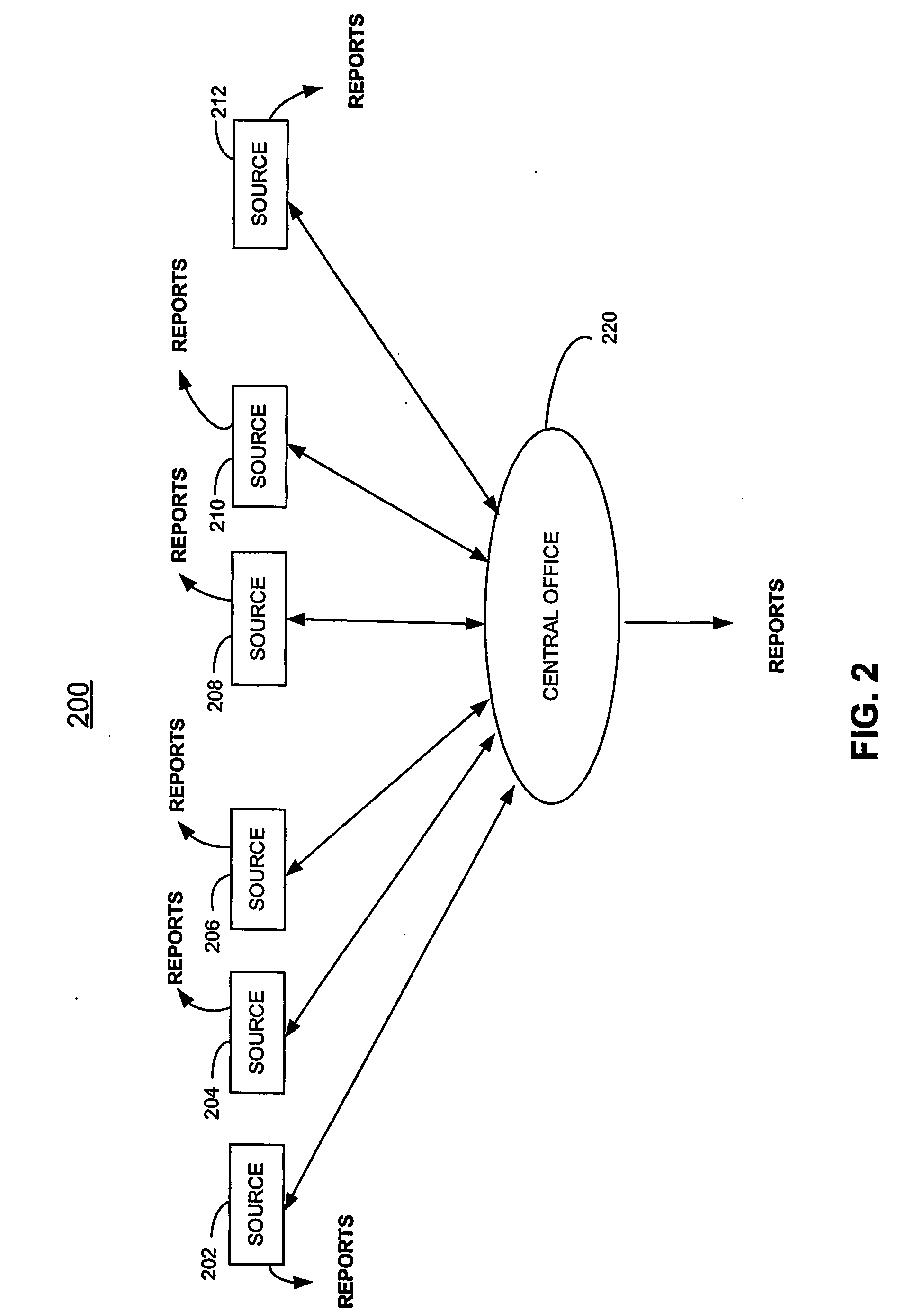Data model development tool
a data model and tool technology, applied in the field of data model development tools, can solve the problems of inefficiency and delay in generating reports, time-consuming and costly, and arduous process, and achieve the effect of facilitating the development of new data structures
- Summary
- Abstract
- Description
- Claims
- Application Information
AI Technical Summary
Benefits of technology
Problems solved by technology
Method used
Image
Examples
Embodiment Construction
[0023]Reference will now be made in detail to the preferred embodiment of the present invention, examples of which are illustrated in the accompanying drawings.
[0024]FIG. 1 is a block diagram depicting an exemplary business organization's organizational structure 100 for generating a report when employing a conventional approach for meeting multiple reporting requirements. The business organization may be any type of business organization such as a banking / financial or a loan company. The business organization having source sites 102 to 112. The source sites 102 to 112 may represent offices, subsidiaries, divisions, business units, and the like of an organization. The source sites 102 to 112 may maintain disparate source data models, which are structured according to local reporting needs. The source sites 102 to 112 may be located in foreign locations and / or offer different products and services. The data models at each of the source sites 102 to 112 may not be compatible because t...
PUM
 Login to View More
Login to View More Abstract
Description
Claims
Application Information
 Login to View More
Login to View More - R&D
- Intellectual Property
- Life Sciences
- Materials
- Tech Scout
- Unparalleled Data Quality
- Higher Quality Content
- 60% Fewer Hallucinations
Browse by: Latest US Patents, China's latest patents, Technical Efficacy Thesaurus, Application Domain, Technology Topic, Popular Technical Reports.
© 2025 PatSnap. All rights reserved.Legal|Privacy policy|Modern Slavery Act Transparency Statement|Sitemap|About US| Contact US: help@patsnap.com



